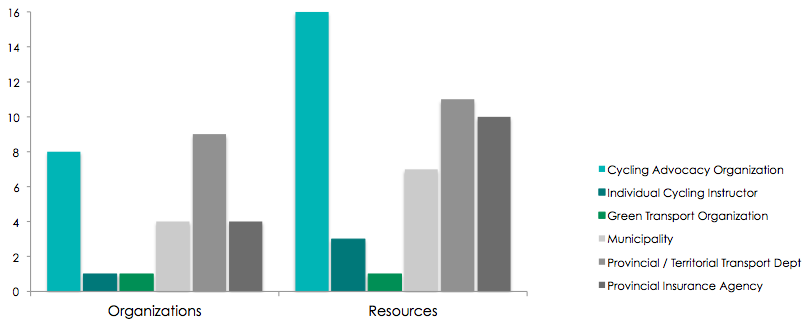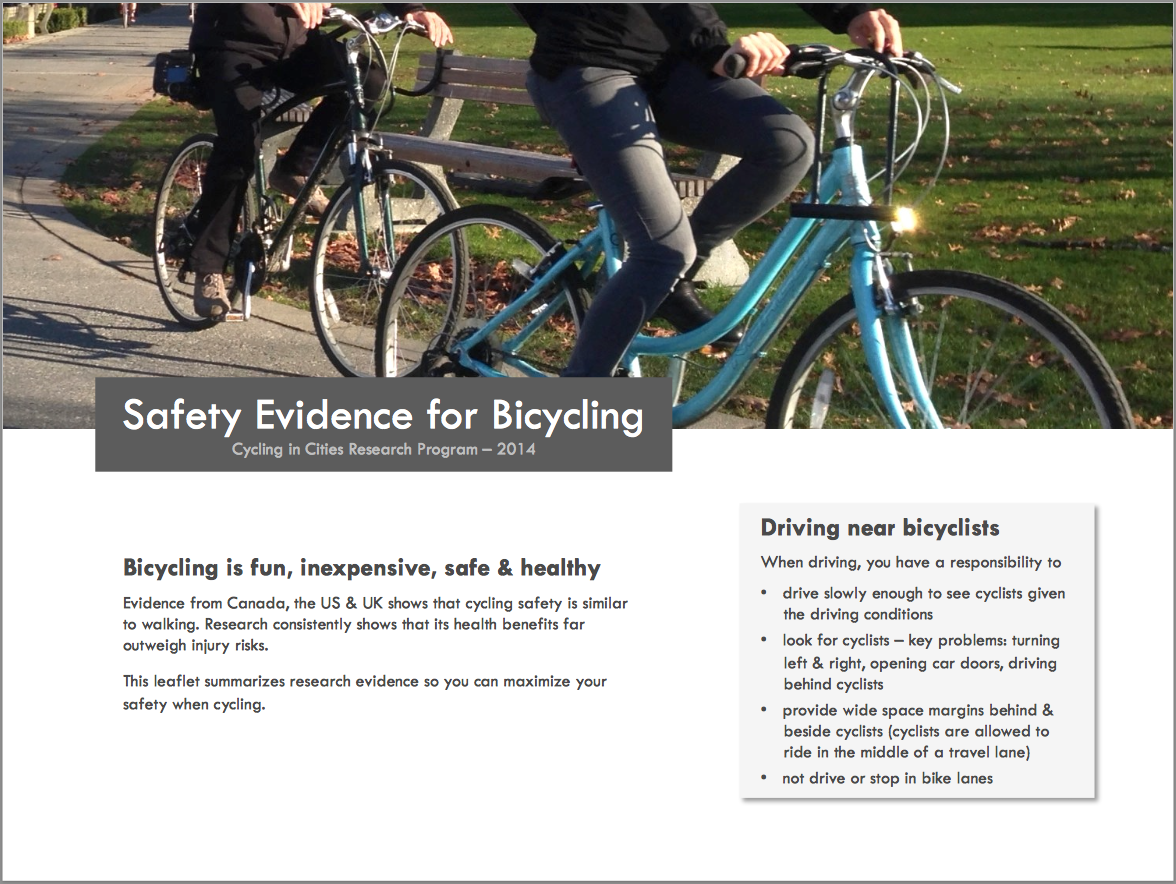Overview
Our goal is to make research from the Cycling in Cities program, and elsewhere, into tools that are useful for policy-makers, planners, and the public. We received funding from the Canadian Institutes of Health Research for a project with two components: an evidence-based audit of education materials related to cycling; and a bikeability tool.
Improving cycling training using safety research
This project had three steps:
- review of the scientific literature on cycling safety;
- review of cycling-related educational materials used across Canada;
- comparison of the scientific evidence to the safety-related messaging in the training materials.
Results
We identified 56 scientific articles focused on crash or injury risk, injury severity, or other safety outcomes that met our inclusion criteria. The evidence covered bicycle-motor vehicle interactions, route characteristics & conditions, route types, bicycling operations, and safety equipment. Two meta-analyses of helmet research were also reviewed.
We gathered 48 education materials for cyclists and/or drivers from provincial and territorial driver’s licensing jurisdictions, municipalities, and non-governmental organizations. Materials covered bicycle-motor vehicle interactions, route characteristics & conditions, route types, bicycling operations, safety equipment, bicycle fit and maintenance, and rules of the road.

Sources of cycling-related education materials for this project
Overall, we found that many of the principles covered in cycling education materials were supported by scientific evidence. A gap in the educational materials was information to help cyclists plan their routes, including scientific evidence about the relative safety of different route types, and route characteristics and conditions. In addition, evidence on motor vehicle passing distances was not included with education messages about where to cycle on the road.

Many education messages were not addressed in the scientific literature at all, but still provided useful information about potential hazards (e.g., gravel, cars pulling out of driveways), bicycle fit and maintenance (e.g., brake condition), and rules of the road (e.g., hand signals). Some important information on cycling-related traffic rules was rarely explained, e.g., how to behave where there are bike boxes, sharrows or traffic circles. A problem in some education materials was uncited, ambiguous “facts” that may be misinterpreted as suggesting causes of crashes or injuries.
Recommendations
The full report on this project “Evidence from Safety Research to Update Cycling Training Materials in Canada” is available here. Based on the results, we proposed the following to improve cycling training materials:
- Review your organization’s education materials compared to the scientific evidence presented in this report to ensure that all elements your organization wishes to convey are included.
- Include information about the relative safety of route types and route characteristicsto help cyclists plan their routes, in particular:
- decreased risk associated with bike-specific route types, including cycle tracks, bike lanes, and bike paths,
- decreased risk associated with routes with low traffic volumes, including residential street bike routes,
- increased risk associated with roundabouts or traffic circles at intersections, and
- increased risk after dark on routes without streetlights.
- Include information about motor vehicle passing distances, so cyclists understand circumstances when motor vehicles are likely to pass closer to them, in particular:
- where motor vehicle speeds and traffic are high,
- where there is motor vehicle traffic in the opposing direction, and
- when the passing vehicle is a heavy vehicle such as a truck or bus.
- Include information for cyclists and drivers about the rules of the road for bike-related infrastructure, such as bike lanes, traffic circles, bike boxes, and sharrows.
- Remove or carefully explain data that does not provide the basis for drawing conclusions about relative safety.
- Cite sources of information used so they can be checked and updated.
- Update training materials from time to time with new scientific evidence about factors affecting cycling safety.




